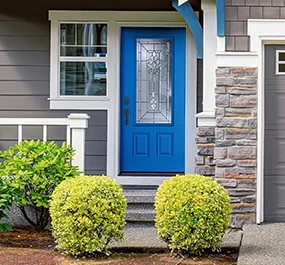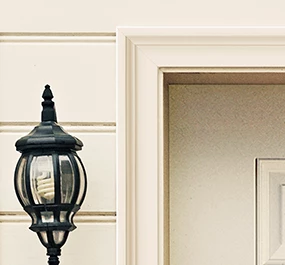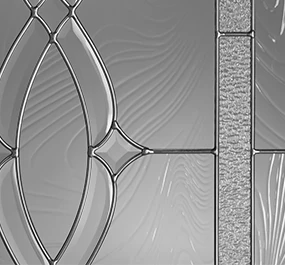When it comes to fuel for your vehicle, the price of a gallon of gas is always fluctuating but never seems cheap. That’s why you do what you can to get the most out of every tank—you put air in your tires when necessary, you never let that oil change go for too long, and, of course, you’re always watching for the best deals on a gallon. Are you doing the same for your home and front door, though?
Putting in the effort to save on your at-home cost for electric is similar to pinching pennies at the pump, but in the controlled utilities market, shopping around for the best deal may not be an option for you. Since you’re at the mercy of regional provider availability and provider rates, which are both out of your control, it’s best to then focus on the things you can control—your home and its energy efficiency, which can be assessed with a home energy audit.
What Is A Home Energy Audit?
Sometimes referred to as a home energy assessment, a home energy audit is used to assess, quantify and report on a building’s energy efficiency. To be energy efficient means to use less energy to produce a result or complete a task—in this case, striving for the optimal energy use to maintain a comfortable living environment.
The audit will be completed by an energy auditor (or energy advisor), a registered professional trained to obtain the information necessary for a successful home energy audit. Their auditing process will consist of three parts: the initial evaluation, any testing, and a debriefing where you’ll receive efficiency recommendations.
The bulk of the evaluation portion consists of a property walkthrough that takes the auditor through the inside and around the outside of a building. While they’re walking through, they’ll be analyzing certain features of the building that can contribute to its overall energy efficiency, an exercise that’ll help the auditor pinpoint a home’s problem areas where environmental leaks can occur that let energy out of or unwanted temperature-changing factors into a home.
They’ll be looking at a building’s methods for heating and cooling its spaces, they’ll take note of an installed HVAC system, and they’ll count the number of doors and windows a structure has and take measurements of each one’s external size. The age of the furnace and water heater could be a factor, as well as the furnace’s filter and any faulty duct connections.
An auditor will also be interested in a building’s levels of insulation, even in the basement and in the attic walls. They’ll be looking to make sure insulation is spread evenly throughout your home and installed correctly so it’s effective, and that any holes for wiring are made snug and sealed.
Lastly, they’ll want to assess the utility bills, which may serve to unveil a great deal about the building despite not being a physical aspect of the structure itself.
After an auditor makes their initial observations and formulates an understanding of the property’s relevant features, it’s time for them to perform tests that help pinpoint problem areas and serve to define what exactly those problems are.
Home Energy Audit Tests
After using their skill set and prior knowledge to make an assessment of your home, a home energy auditor will turn to a few tests developed by the industry to better pinpoint problem areas and unmask any previously overlooked issues with a home’s energy efficiency.
One of the most common tests is known as an airtightness test or blower door test. During the exercise, a temporary seal and pressure gauge is applied to a door. Then, a high-powered fan is used to push air towards the door to expose any critical leaks. Home energy auditors usually use an infrared camera during this test, too.
That way, they can see exactly where the leak is coming from. This equipment can be rented and used apart from any home energy audit, but hiring a professional is the best way to get an accurate reading. Additionally, the cost of renting may exceed the cost of an audit.
Other tests may be conducted on your furnace by using an efficiency meter, on your whole residence via thermographic scan, or on specific portions of your home with a surface thermometer. Each professional may have a different method for doing things, but the more you know the better when it comes to information about your home.
What’s the Cost?
Private companies will charge you for an audit in various ways. The company could have a flat fee for any audit, charge by the size of a property, or use other metrics to come up with a cost. However, doing some research before paying for a home energy audit can lead to a free audit for your home. Local nonprofits or governments could offer the audit as a community service, while your utility company may offer it as a service to its customers. Freeing yourself from the financial burden of a home energy audit can make it a lot easier to work some of the assessment’s suggested changes into your budget.
The Benefits of a Home Energy Audit
On the monetary end, a home energy audit can tell you where your home is causing you to spend unnecessary money on your electric bill. Once you’re aware of these issues, you can create a plan to address them. Creating a tighter seal between your dwelling and the outside world can also create a more comfortable environment.
There’s a long list of benefits, but perhaps the most important—especially for younger homeowners—is the reduced carbon footprint of a more energy efficient home. Using less power means consuming less energy and putting less emissions back into the environment. You can push that concept further by practicing sustainable home ownership, too!
Recommendations Following a Home Energy Audit
It isn’t uncommon for an auditor to suggest two specific changes almost immediately after—or even when walking through—a home, and neither has anything to do with the construction of the building itself.
First, they may suggest a change in your choice of lightbulbs. If you’re still using the admittedly still standard incandescent light bulbs to illuminate your household, a switch over to compact fluorescent lamps (labeled CFLs on packaging) or light-emitting diodes (labeled LEDs on packaging and much more common in everyday modern life) can near-instantly reduce your home’s overall energy costs. This may require a change to some of your current light fixtures, but making these upgrades will save you more down the road.
Speaking of paying now to save down the road, nothing about home ownership may embody that more than appliance upgrades. As a commonly costly proposition, appliance upgrades can be a bitter medicine, but it’s a remedy that introduces the newest energy-saving technology into your home while usually upgrading the capabilities of whichever equipment came before it. Old appliances also lose mechanical efficiency with prolonged use, making them a larger drain on your home’s power.
When replacing your appliances and home electronics, be sure to look for the Energy Star logo on an item’s packaging. More than just a marketing tool, the Energy Star logo denotes a product that’s up to industry energy standards within that product’s category.
Other tech-based solutions to easing the energy burden on your home may include larger upgrades like installing a smart thermostat or adding insulation. The price tag on projects like this can be high, but doing things like upgrading your home’s connectivity and improving heat retention can also increase your home’s value and your family’s quality of life.
How to Make Your Front Door More Energy Efficient
Some of the easiest suggestions to come from a home energy audit have to do with your windows and exterior doors. For windows, add caulking and weatherstripping to seal any leaks from frames. Heat loss can also occur through a window’s glass panes, so purchase coating that’ll help mitigate that loss—as an added bonus, most coatings also include some sort of privacy protection or reduce a window’s breakability.
Any glass on front doors should be treated the same way, and weatherstripping should be applied to a door frame’s leaks, too. A sweep can also be added at the bottom of a door to seal off the gap between the floor and the door. Weatherproofing a front door can do wonders for your home’s efficiency and your own comfort.
If you’ve taken these measures and you’re still noticing leaks around your door—or if your door shows signs of damage that could impact its ability to create a tight seal that holds the outdoors at bay—a door replacement may be your best option. That may sound like an expensive proposition, but replacing a front door can be cheaper than replacing one of your appliances and can have an even larger impact on your home’s energy efficiency.
When it comes to efficient front doors, fiberglass is the right material for the job. Fiberglass doors help a home retain heat and keep out cold better than their metal and wood counterparts. As an added bonus, fiberglass doors last longer and require less routine maintenance than doors made with other materials, allowing you more time and money to complete other efficiency upgrades. So, even if your doors aren’t in need of a replacement right away, a switch to fiberglass can still pay dividends in the long run.
Conclusion: Sustainable Homes with Plastpro
Home energy audits can pinpoint a lot of different ways to make your home more energy efficient, but the front door is often the most cost-effective change you can make. Invest in a fiberglass front door and, over the long lifespan of an exterior fiberglass door, it’ll end up paying for itself. Find a dealer today to get started on your journey towards a more sustainable home!



